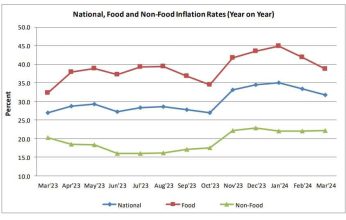Banks reaping from high lending rates
Malawian banks are among the most profitable financial institutions in Africa, thanks to the high net interest margins (NIM), the United Nations Economic Commission for Africa (Uneca) has said.
In its recently published Economic Report on Africa, Uneca observed that Malawi recorded a NIM—a measure of the difference between interest income generated by banks or other financial institutions and the amount of interest paid out to their lenders—of more than 10 percent, an indication that banks in the country are highly profitable.

Reads the report in part: “African countries that recorded high NIMs [above 10 percent on average] include Ghana, Malawi, Mozambique, Uganda and Zambia, indicating that banks are highly profitable in those countries.
“The high ratios can be explained by the structure of their balance sheets, the high interest rates environment in which they operate or the high concentration of few banks in their respective countries.”
For instance, the Global Finance Development Database 2019 indicated that in Malawi, the three largest banks in Malawi held 86.8 percent of total commercial banking assets in 2017.
Since June 2019, Reserve Bank of Malawi (RBM) had maintained the policy rate at 13.5 percent from 14.5 percent in April, until in October last year when the policy rate was reduced to 12 percent.
Over the period, reference rate has averaged 13.3 percent while savings rate has averaged 4.2 percent.
However, commercial bank loans have been attracting interest rates in excess of 25 percent.
However, despite the development, interest rate spread has remained wide at around 15 percent, a situation that Consumers Association of Malawi (Cama) executive director John Kapito says has prevented consumers and businesses from borrowing funds and paying loans.
“The banks are not being honest with consumers. We need an intervention from the central bank,” he said.
However, market analyst Cosmas Chigwe observed that in the interest rate spread, the higher lending rates in the country are due to the high risk in the country.
He said since the country does not have a proper credit reference system, which should improve with the national identity cards system, it leads to higher lending risks for banks.
“However, a case can indeed be made on the lower savings rates,” he said.
Earlier, Bankers Association of Malawi (BAM) chief executive officer Lyness Nkungula said banks react to policy rate reduction differently according to their internal business policies.





